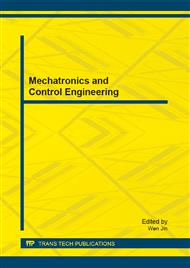[1]
CHEN Zhong-ren, DONG Hao-bin. Development of Novel Transient Electromagnet Tiansmitter. Progress in Exploration Geophysics. (2004), Vol. 27, pp.444-446.
Google Scholar
[2]
TAN Guo-zhen, FU Zhi-hong, ZHOU Luo-wei, LUO Qiang. A Design of Control for Transient Electromagnetic Transmitter. Electrical Measurement & Instrumentation. (2006), Vol. 43, pp.8-12.
Google Scholar
[3]
LIN Pin-rong, GUO Peng, SHI Fu-sheng. A Study of the Techniques for Large-depth and Multi-functional Electromagnetic Survey. Acta Geoscientica Sinica. (2010), Vol. 4, pp.149-154.
Google Scholar
[4]
Wang Sheng-yuan. Rectifier-preferred Power Supply for Cleaner Production in Eleetroplaling Industry. Electroplating & Finishing. (2007), Vol. 26, pp.39-41.
Google Scholar
[5]
MA Fu-jun, LUO An, XIAO Huagen. High-power High-efficient and Simplified High-frequency Switching Power Supply for Electrolytic Plating. Proceedings of the CSEE. (2012), Vol. 32, pp.71-78.
Google Scholar
[6]
Dahono Pekik Argo, Ismutadi Pandu, Sato Yukihiko. A Control Method for Single-phase PWM Inverters. Proceedings of the International Conference on Power Electronicsand Drive Systems. (2001), 1: 282-285.
DOI: 10.1109/peds.2001.975326
Google Scholar
[7]
CHEN Rui, LIANG Wei, WEI Zhong-chao. Study of Inverter with Dual-Loop Control. Telecom Power Technologies. (2006), Vol. 6, pp.19-21.
Google Scholar
[8]
Kukrer O, Komurcugil H. Control Strategy for Single-phase UPS Inverters. Electric Power Application, IEEE Proc. (2003), Vol. 150, pp.743-746.
Google Scholar
[9]
YANG Hui-min, SONG Jian-cheng. Modeling and simulation of a single-phase voltage PWM inverter based on dual-loop control. Electric Drive Automation. (2009), Vol. 31, pp.15-18.
Google Scholar
[10]
Kim. J. W, Choi. H. S, Cho. B. H. A novel droop method for converter parallel operation. IEEE Transactions on Power Electronics, (2002), Vol.17, pp.25-32.
DOI: 10.1109/63.988666
Google Scholar
[11]
Panov. Y, Jovanov. M. Stability and dynamic performance of current-sharing control for paralleled voltage regulator modules. IEEE Transactions on Power Electronics, (2002),Vol.17, pp.172-179.
DOI: 10.1109/63.988827
Google Scholar
[12]
Lin. C, Chen. C. Single-wire current-share paralleling of current-mode-controlled DC power supplies. IEEE Transactions on Industrial Electronics, (2000), Vol.47, pp.780-786.
DOI: 10.1109/41.857958
Google Scholar
[13]
Huang. Y, Tse. C. K. Circuit theoretic classification of parallel connected DC-DC converters. IEEE Transactions on Circuits and Systems-I, (2007), Vol.54, pp.1099-1108.
DOI: 10.1109/tcsi.2007.890631
Google Scholar


